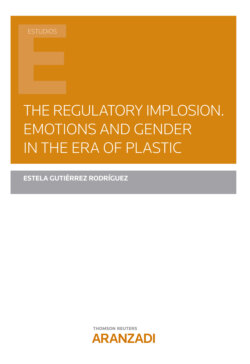Читать книгу The Regulatory Implosion. Emotions and Gender in the Era of plastic - Estela Gutiérrez Rodríguez - Страница 12
На сайте Литреса книга снята с продажи.
Оглавление3
Regulation and crops towards the regulatory implosion
3.1. European safety and prevention for EDC
Since 1997, the member countries of the European Commission began to register in Parliament repeated claims based on innumerable investigations and scientific evidence of EDC’s damages since the 1930s.
On December 17, 1999, the Commission issued the Communication COM (1999) 706, addressed to the European Council (EUCO – consilium) and the European Parliament. The document was presented as a “Community strategy on endocrine disruptors (substances that are suspected of interfering with the hormonal systems of humans and animals)”25.
The text of the introduction announced, 23 years ago at the time of the publication of this book:
“By ‘endocrine disruption’ is known a mechanism that affects the functioning of the endocrine system, which means, human and animal development, growth, reproduction and behavior. There is growing concern about a number of substances that are suspected to interfere with endocrine processes and are called ‘endocrine disruptors’. These substances can cause damage to health such as cancer, behavioral disorders and reproductive abnormalities (…).
There is enough evidence that testicular cancer rates are increasing and the decline in sperm counts in some countries is likely to be veridical”.
The objective of the document at that time was based on defining the problem, its causes and consequences, as well as establishing an appropriate policy based on the precautionary principle. It continues, that in this way an answer can be given “to alleviate public concern”.
The objectives and steps to carry them out were defined through the International Program for Protection against Chemical Products (IPPCP) jointly with the international organizations WHO, UNEP, the OECD and the ILO, as well as specialists from various countries globally, such as Japan, USA, Canada and the EU.
The statement in its section “effects and sources of exposure”, informs that “the phenomenon of endocrine alteration is not new”. It was already known that diethylstilbestrol (DES) used since 1938, acts as an artificial estrogen and causes serious problems for male and female reproduction. DES can causes cancer in the mother and in female offspring. “In addition to the DES, there are other endocrine disruptors (EDC) suspected of being related to several human and animal health disorders”.
The Committee concluded also that “there is a relationship between the endocrine-disrupting chemical substances studied so far and human health disorders such as testicular, breast and prostate cancers, decreased sperm count, reproductive organ deformities., thyroid dysfunctions, and neurological and intelligence-related problems”. It adds, “(…) there is a possibility that the problem occurs worldwide”.
The measures dictated by the Commission to deal with the problem of EDC were lax, imprecise and not at all daring, especially if we take into account the evidence available at the time of publication of this communication, we recall it was in 1999.
3.2. European regulations on endocrine disruptors
It is important to add for the readers, that at the beginning, upon detecting the problems about EDC for citizens and the environment, the European Union aproved so many normative regarding polluting substances in order to respond to the public pressure. These were developed in three stages; “Hazard identification”, “risk assessment or analysis”, and “risk management”.
Therefore, in order to legally investigate where these substances could be included, were approved the incredible number of 27 European Directives and 5 Regulations. Despite multiple attempts to include the so-called endocrine disruptors in some form of regulation, the goal was achieved onlyin 2007 with the well-known REACH Regulation that we will briefly in the next chapter.
This means that it took more than 70 years to bring the attention to global human security, since these chemicals were present in our lives and in those of our descendants.
25. Communication from the Commission of the European Communities, the Council and the European Parliament containing the Community strategy on endocrine disruptors, COM (1999) 734final of December 17, 1999.
